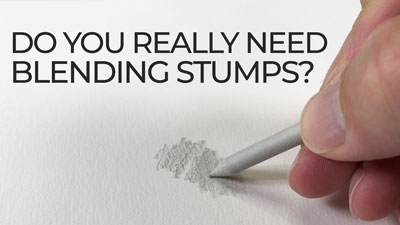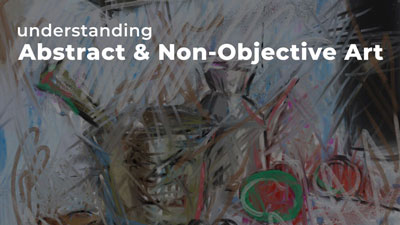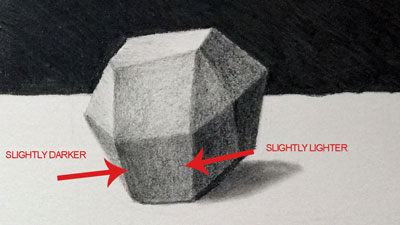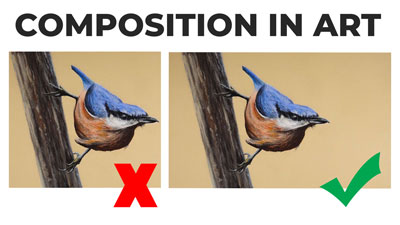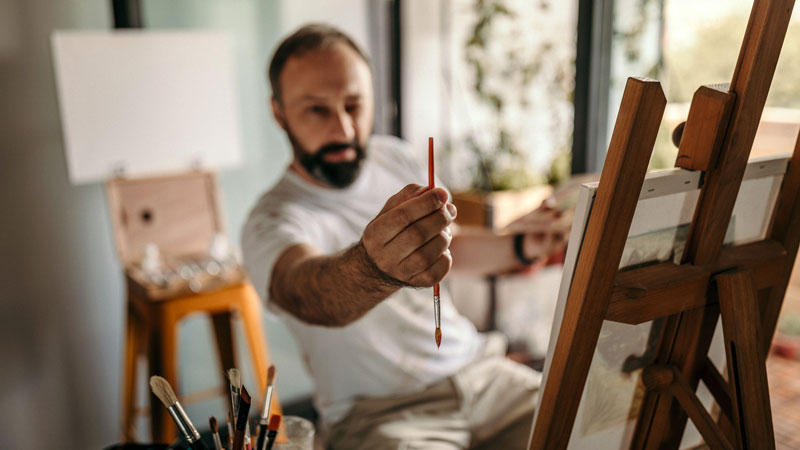
We hear it all the time – “Draw or paint what you see.”
Seems simple enough, right? Just look at whatever your subject may be and put it on the surface. Artists and art instructors are notorious for telling their students to “just draw what they see”, often leaving the student with a confused look on their face.
For those of us that already know what to look for, this infamous statement makes perfect sense. It seems simple, because it is simple.
Many students however, simply do not know what to look for to “draw what they see”. They may see a still life, a landscape, or a person, but they don’t understand how take the visual information and turn it into a representational drawing or painting.
But once they know and understand what needs to be observed and recorded in the art, the “light bulbs” turn on.
In this post, we’ll look at six things to look for when creating an observational drawing or painting, so that you can draw what you see. (You’ll notice a theme here – if you’re really sharp.)
Look For the Shapes
For many of us, the first things we notice are the lines. This is how most of us first learn how to draw so it makes sense that we seek these out initially. We see the edges of objects as lines, which are referred to as contour lines. Our first inclinations are to draw these lines first, which often leads to a distorted shape of the subject.
I suggest that we skip the lines at the onset and instead look for the shapes. Sure, we’ll use lines to draw the shapes, but starting a drawing or painting by identifying the shapes often leads to greater accuracy. Don’t worry, we’ll address the lines, but it’s often not the best place to start.
All subjects, no matter how complex they may be, can be simplified into basic shapes. By layering basic shapes and piecing them together, we can build the structure of the subject. The process of finding the shapes in your subject does take a bit of practice and training of your mind, but that’s what sketchbooks are for.
Here’s a simple example…
 Oh yes – the hand. The subject of the hand strikes fear in every beginning artist because it is quite complex. But even this complex subject can be simplified into basic shapes that are quite easy to draw. It’s just a matter of identifying those shapes and piecing them together.
Oh yes – the hand. The subject of the hand strikes fear in every beginning artist because it is quite complex. But even this complex subject can be simplified into basic shapes that are quite easy to draw. It’s just a matter of identifying those shapes and piecing them together.
In the above example, a rectangle is drawn for the back of the hand. A triangle is drawn on the side of the rectangle, connecting the thumb. Organic shapes are drawn for each segment of the fingers.
As we draw the shapes, we can also make comparisons to the negative shapes that exist around the subject. These comparisons and the adjustments that are made, will further improve the accuracy of the drawing or painting.
Once the basic shapes are drawn and laid out, we can now move on to the next thing to look for – the lines.
Look For the Lines
Now that we’ve identified the shapes, we can move on to drawing or painting the lines. Since the overall shape of the subject has been defined, we can concentrate on the quality of line that is created, without worrying about the shape created by our contours (outlines).
Using the shapes as guidelines, we can add the contour lines adjusting the thickness and thinness of the mark to create variety and interest.
 The line quality that is produced not only enhances the visual interest, but also communicates the form and texture of the subject. When we observe the subject, we can pay close attention to subtle changes in the lines and add them, “as we see them”, in the drawing or painting.
The line quality that is produced not only enhances the visual interest, but also communicates the form and texture of the subject. When we observe the subject, we can pay close attention to subtle changes in the lines and add them, “as we see them”, in the drawing or painting.
Watch the leaf demonstration (Membership Required) –
Let’s move on to the next thing to look for – value.
Look For the Values
It is important to note that the next few things that we’ll be looking for in our subject are all dependent on one another. So they may be all observed concurrently since they influence each other. We’ll start with value, since it is the greatest influencer of the other two. And if the value is accurate, then texture and form just “fall into place”.
Value is defined as the darkness or lightness of a color. It is how we actually see the important parts of the world around us. It is the value that tells us about the light, forms, and textures of the environment around us.
Finding the dark, light, and middle values in your subject and adding them in the correct locations in the art leads to accuracy.

- Watch this demonstration (Membership required)
Because it tells us so much about the light, getting the value as close as possible to what is observed is crucial. It is one of the most important things to look for when you are drawing “what you see”. It doesn’t have to be perfect, but try to match the observed values as closely as you can.
Look For the Form
The form of the subject is communicated through the value that exists on the subject. The relationships of those values tell the viewer about the form of the subject.
Most objects will have defined areas of value which can be identified.
 Above image from “The Oil Painting Master Series” course.
Above image from “The Oil Painting Master Series” course.
- Highlight – The location on the subject where light is hitting most directly.
- Midtone – Area on the subject of middle value, often the local color of the subject.
- Core Shadow – Area on the subject in shadow
- Reflected Highlight – Locations of value lighter than the core shadow that result from surrounding objects or surfaces bouncing light onto the main subject.
- Cast Shadow – Shadows that are cast on surrounding objects or surfaces as a result of blocked or partially blocked light.
The positioning of these locations of value tell the viewer about the light and the form of the subject, so it makes sense that we should be looking for them on the subjects that we draw or paint. When we position them correctly, the illusion of form is created.
Look For the Textures
Just like form, texture is communicated in a drawing or painting by the relationships of value. The directional marks, whether they be made with a pencil or with a brush also play a role.
In combination, the directional marks and the relationships of value lead to the illusion of texture.

Above image from “The Colored Pencil Course”.
The directional marks that are made often “flow” over the form of the subject. These implied lines are sometimes referred to as “cross contour lines”. Not only do these lines communicate the texture on the subject, but they can also tell us a bit about the form.
Look For the Colors
Of course, the color is important in an observational drawing or painting and should be observed closely. The trick in applying the color does not necessarily lie in the observation, but instead in how those observed colors are to be mixed.

Above image from “The Watercolor Workshop”.
Mixing colors requires a bit of practice and experience with the medium. Different mediums require different mixing techniques. You don’t mix oil paints in the same manner that you mix colored pencils, for example.
And while matching the color as closely as possible may seem incredibly important, the value of the color applied is actually a greater factor. Colors can be completely altered, but if the value is matched, then the subject is still communicated.

Of course, with observational drawing and painting, you’ll want to match the colors as closely as possible. You don’t want to paint a portrait of someone and make them green (unless they are a Martian or are very sick). I include the image above to demonstrate the importance of value and to point out that if you’re off a bit with the color, it’s typically okay – as long as the values are close.
The Theme
Have you noticed a theme? If you’re keen, you’ve probably noticed that the six things listed here are six of the seven elements of art…
- Line
- Shape
- Form
- Value
- Texture
- Color
The only element missing is “space”, which is communicated through a variety of factors including placement, value, color, detail, overlapping, and size.
The key to “looking” lies in knowing what exactly to look for. When we create an observational drawing or painting, we communicate the subject through the elements of art.
It only makes sense that these elements are what we look for on our subjects when we “draw what we see.”
If so, join over 36,000 others that receive our newsletter with new drawing and painting lessons. Plus, check out three of our course videos and ebooks for free.


